On Olympic Aspirations
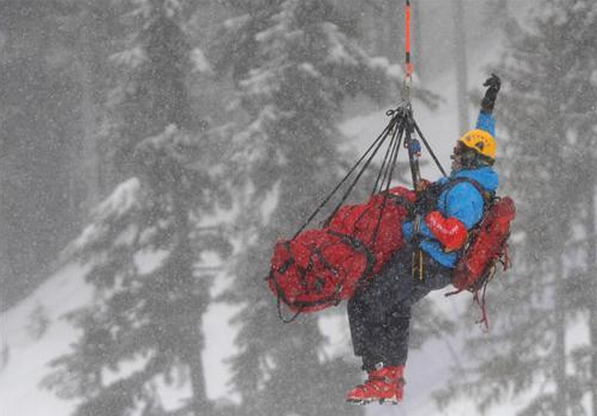
I understand the hopes and dreams of Olympic athletes is a slightly more visceral way today through the potential of one of them ending their career in a crash. US downhill skier Stacey Cook crashed near the tunnel section on the women’s course.
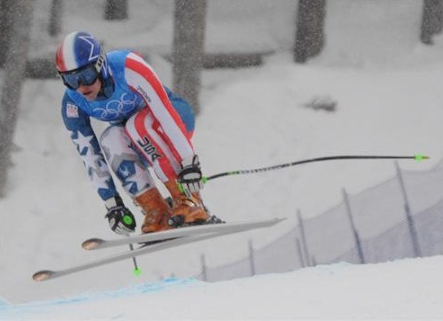
She missed the landing on a jump, and hit the “A” fence (the innermost line of fencing) in the corner. Watching the video (somehow unavailable for watching in Canada) it looked quite violent.
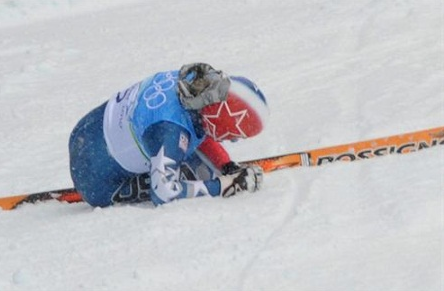
However, she managed to sit up and take off her skis, but she grabbed her head as if in pain. When the ski patrol reached her side they quickly laid her down and established c-spine control.
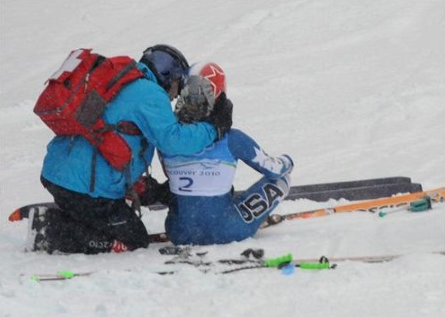
Right about this time I was standing near the medical trailer trying to get a sandwich (since I fly in from Whistler Airport every day I don’t get a chance to pick up lunch). In my headset I heard the chief of patrol asking that the helicopter be put on standby for a medical evacuation. Since I have not been watching the monitors, I don’t know the situation, just that we need to get ready to launch.
The AS 355 FX2 “Twin Star” (CFXBC) takes about 5 minutes to warm up (pre-flight check followed by starting and warming two engines). This gives me a lot of time to get ready, but since I’m already wearing my harness, boots, helmet, radio and goggles I really don’t need to rush. This does not stop me from running however. The pilot passes me on the way as he is not wearing ski boots.
I toss my big gloves into my pack, and put on the thinner ones that give me the dexterity to manipulate the carabiners. I clip on crampons since the course can be very steep and icy. I have a pack with very little gear in it, just some extras and a “screamer suit” in case a physician needs to accompany me.
The helicopter powers up and we’re in the air. The weather is foggy, with light snow falling. There were course holds several times during the day, and what becomes apparent from the air is that there are several cloud bands clinging to the side of the mountain. The pilot needs to swing way out over Creekside before he can gain elevation. As we approach I see blue-clad course workers all over the place, making it difficult to spot our target area.
Soon however I see a course worker in the middle of the run holding his hands above his head, just like we’ve trained. That’s my landing area. I check that the pilot sees him, and we start our approach. As you might notice, most of my job is just hanging there.
When I arrived, the patrol doctor and two other members are on scene, along with a coach and another course worker. When they were ready, we moved her into my transportation bag (the “aerial rescue platform”, or ARP).
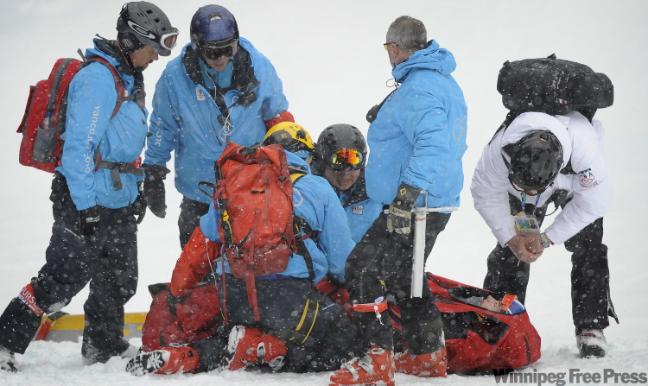
Once in the bag, we moved to the middle of the run to be away from the “A” net.
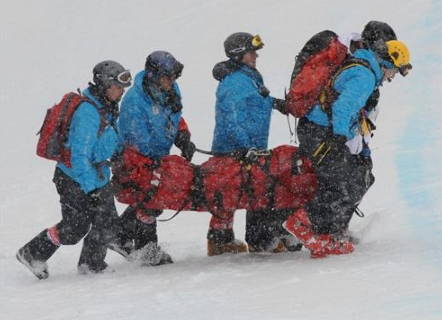
And called the helicopter back. There are several shots of the take-off:

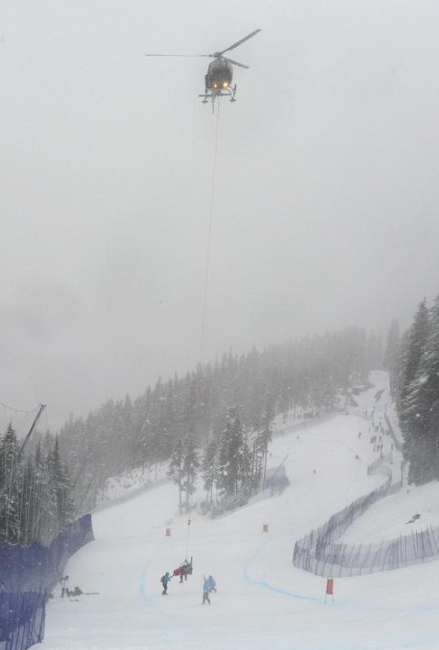
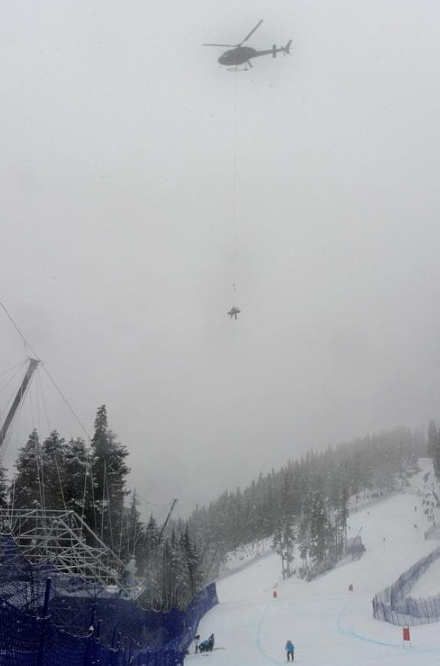
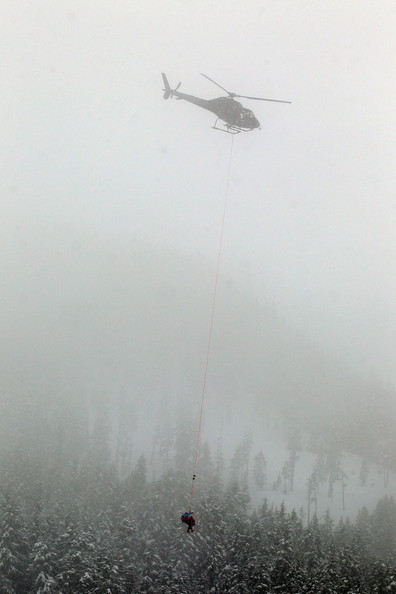
As we made the 4 minute flight to the Polyclinic, being blasted by ice pellets at 60 knots, and buffeted by winds, we can’t really talk. I yelled that I was sorry that this happened to her, and that we’d be at the hospital soon. I thought to myself, what do you say to someone who’s devoted their life to sport and suffers and injury at the highest level of competition in their field? I feel that anything I say will be meaningless because I cannot put myself into her frame of reference. So I just concentrate on blocking her face from the sandblasting effect of snow and wind at high speeds.
Landing at the medical centre is a whole other world. From ice and snow on the mountain side, I land in a parking lot on the outskirts of Whistler. A medical team is standing by, looking for all the world just like the crew from the TV show MASH – prepared, capable and taking shelter from the downblast of the Astar. As I come in I warn then to stay away from my feet since I’m still wearing the crampons. They know, and they only approach after my feet are on the ground. The pilot, Paul, one of the very best I have ever flown with has this technique of putting my feet on the ground, and then stopping the descent for just a few seconds so I can get my footing, and then continuing to lower me until the stretcher is on the ground. Like a surgeon, except 150 feet up.
I unhook the spider straps that support the ARP, in the process freeing myself from the line. I signal and radio Paul that I’m disconnected and he flies away, as planned, back to the downhill course to be ready for the next rescue. Several medical attendants approach and I assist them to get the stretcher on a gurney, and they wheel her away. At this point, I just follow them; they, dressed in light scrubs, me in full mountaineering gear: goggles, helmet, gloves, ski boots, harness, crampons and backpack. A study in contrasts.
Eventually I follow the crew into the futuristic medical trailer that has been purchased specifically to provide a mobile emergency room capable of providing treatment for the most severe of injuries. At this point I have no idea of the extent of Ms Cook’s injuries. I’m trying to stay out of the way. My goal is to assist the medical team to get her out of the transport bag, and from there to get back to the downhill course in case of another injury.
As they get her onto the table and she is out of the bag, I retrieve the equipment and leave the medical trailer; I have no intention of invading her privacy. My part of the rescue is done, and I pack things up and make my way back to the downhill event.
Update: this morning the internets are reporting that she’s doing fine, and the extent of her injuries are mostly bruising. She is scheduled to take part in training today. These athletes are amazing; I’ll be cheering for Stacey Cook as well as the rest of the Canadian team!

0 Comments on “On Olympic Aspirations”